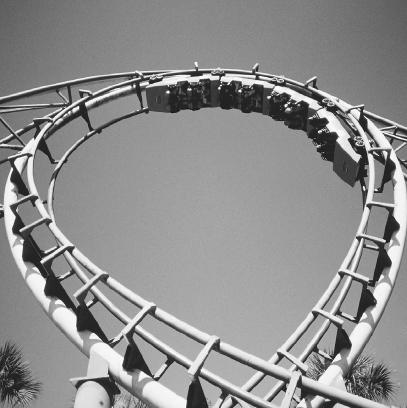Centripetal Force - How it works

Velocity = Speed + Direction
Speed is a scalar, meaning that it has magnitude but no specific direction; by contrast, velocity is a vector—a quantity with both a magnitude (that is, speed) and a direction. For an object in circular motion, the direction of velocity is the same as that in which the object is moving at any given point. Consider the example of the city of Atlanta, Georgia, and Interstate-285, one of several instances in which a city is surrounded by a "loop" highway. Local traffic reporters avoid giving

As with cars on I-285, the direction of the velocity vector for an object moving around a circle is a function entirely of its position and the direction of movement—clockwise or counter-clockwise—for the circle itself. The direction of the individual velocity vector at any given point may be described as tangential; that is, describing a tangent, or a line that touches the circle at just one point. (By definition, a tangent line cannot intersect the circle.)
It follows, then, that the direction of an object in movement around a circle is changing; hence, its velocity is also changing—and this in turn means that it is experiencing acceleration. As with the subject of centripetal force and "centrifugal force," most people have a mistaken view of acceleration, believing that it refers only to an increase in speed. In fact, acceleration is a change in velocity, and can thus refer either to a change in speed or direction. Nor must that change be a positive one; in other words, an object undergoing a reduction in speed is also experiencing acceleration.
The acceleration of an object in rotational motion is always toward the center of the circle. This may appear to go against common sense, which should indicate that acceleration moves in the same direction as velocity, but it can, in fact, be proven in a number of ways. One method would be by the addition of vectors, but a "hands-on" demonstration may be more enlightening than an abstract geometrical proof.
It is possible to make a simple accelerometer, a device for measuring acceleration, with a lit candle inside a glass. The candle should be standing at a 90°-angle to the bottom of the glass, attached to it by hot wax as you would affix a burning candle to a plate. When you hold the candle level, the flame points upward; but if you spin the glass in a circle, the flame will point toward the center of that circle—in the direction of acceleration.
Mass × Acceleration = Force
Since we have shown that acceleration exists for an object spinning around a circle, it is then possible for us to prove that the object experiences some type of force. The proof for this assertion lies in the second law of motion, which defines force as the product of mass and acceleration: hence, where there is acceleration and mass, there must be force. Force is always in the direction of acceleration, and therefore the force is directed toward the center of the circle.
In the above paragraph, we assumed the existence of mass, since all along the discussion has concerned an object spinning around a circle. By definition, an object—that is, an item of matter, rather than an imaginary point—possesses mass. Mass is a measure of inertia, which can be explained by the first law of motion: an object in motion tends to remain in motion, at the same speed and in the same direction (that is, at the same velocity) unless or until some outside force acts on it. This tendency to maintain velocity is inertia. Put another way, it is inertia that causes an object standing still to remain motionless, and

Centripetal Force
Now that we have established the existence of a force in rotational motion, it is possible to give it a name: centripetal force, or the force that causes an object in uniform circular motion to move toward the center of the circular path. This is not a "new" kind of force; it is merely force as applied in circular or rotational motion, and it is absolutely essential. Hence, physicists speak of a "centripetal force requirement": in the absence of centripetal force, an object simply cannot turn. Instead, it will move in a straight line.
The Latin roots of centripetal together mean "seeking the center." What, then, of centrifugal, a word that means "fleeing the center"? It would be correct to say that there is such a thing as centrifugal motion; but centrifugal force is quite a different matter. The difference between centripetal force and a mere centrifugal tendency—a result of inertia rather than of force—can be explained by referring to a familiar example.
Comment about this article, ask questions, or add new information about this topic: